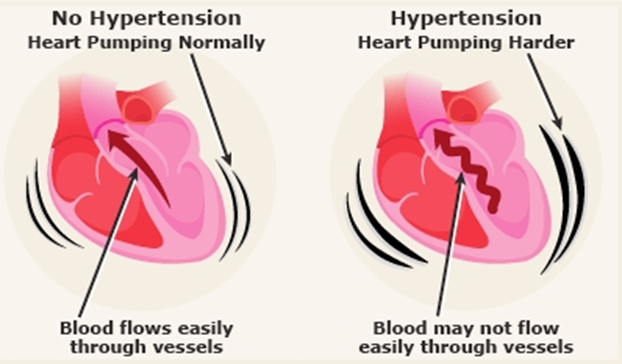A nurse in a provider’s office is caring for a client who is at 34 weeks of gestation and at risk for placental abruption. The nurse should recognize that which of the following is the most common risk factor for abruption?
Cocaine use
Blunt force trauma
Hypertension
Cigarette smoking
The Correct Answer is C
Choice A reason:
Cocaine use: Cocaine use during pregnancy is a significant risk factor for placental abruption. Cocaine causes vasoconstriction, which can reduce blood flow to the placenta and lead to its premature separation from the uterine wall. However, it is not the most common risk factor.
Choice B reason:
Blunt force trauma: Trauma to the abdomen, such as from a car accident or a fall, can cause placental abruption. This type of trauma can lead to the separation of the placenta from the uterine wall, resulting in bleeding and potential complications for both the mother and the fetus.
Choice C reason:
Hypertension: Hypertension, or high blood pressure, is the most common risk factor for placental abruption. Chronic hypertension or pregnancy-induced hypertension (preeclampsia) can damage the blood vessels in the placenta, leading to its premature separation. This condition can significantly increase the risk of placental abruption and is a critical factor to monitor in pregnant women.

Choice D reason:
Cigarette smoking: Smoking during pregnancy is another risk factor for placental abruption. Nicotine and other harmful substances in cigarettes can affect placental blood flow and increase the risk of abruption. However, like cocaine use, it is not the most common risk factor.
Nursing Test Bank
Naxlex Comprehensive Predictor Exams
Related Questions
Correct Answer is A
Explanation
Choice A Reason:
Drying the newborn’s skin thoroughly is the most effective way to reduce evaporative heat loss. When a newborn is born, they are wet with amniotic fluid, which can evaporate and cool the skin rapidly. By drying the infant thoroughly, the nurse removes this moisture, thereby preventing heat loss through evaporation.
Choice B Reason:
Preventing air drafts is important for reducing convective heat loss, not evaporative heat loss. Convective heat loss occurs when cool air moves across the skin, taking heat away from the body. While preventing drafts is crucial, it does not directly address evaporative heat loss.
Choice C Reason:
Placing the newborn on a warm surface helps reduce conductive heat loss, which occurs when the baby comes into contact with a cooler surface. While this is an important step in maintaining the newborn’s temperature, it does not specifically address evaporative heat loss
Choice D Reason:
Maintaining an ambient room temperature at 24°C (75.2°F) helps create a warm environment for the newborn, reducing overall heat loss. However, this action primarily addresses convective and radiant heat loss rather than evaporative heat loss.
Correct Answer is A
Explanation
Choice A Reason:
One of the most reliable indicators that a baby is getting enough breast milk is the number of wet diapers. A well-hydrated baby should wet at least 6 to 8 diapers per day. This indicates that the baby is receiving sufficient fluids and nutrients from breast milk. Consistent wet diapers are a clear sign that the baby is feeding well and getting enough milk.
Choice B Reason:
A wake cycle of 30 to 60 minutes after each feeding is not a reliable indicator of adequate breast milk intake. Babies have varying sleep and wake patterns, and these can be influenced by many factors other than feeding. While some babies may stay awake for a short period after feeding, this is not a definitive sign of adequate milk intake.
Choice C Reason:
Burping after each feeding is a common practice to help release any swallowed air, but it does not indicate whether the baby is getting enough breast milk. Burping is more related to the baby’s comfort and digestion rather than the quantity of milk consumed.
Choice D Reason:
Sleeping at least 6 hours between feedings is not typical for a newborn, especially in the first few weeks of life. Newborns usually feed every 2 to 3 hours, including during the night. Long sleep intervals can be a concern and may indicate that the baby is not feeding frequently enough, which could affect milk intake and hydration.
Whether you are a student looking to ace your exams or a practicing nurse seeking to enhance your expertise , our nursing education contents will empower you with the confidence and competence to make a difference in the lives of patients and become a respected leader in the healthcare field.
Visit Naxlex, invest in your future and unlock endless possibilities with our unparalleled nursing education contents today
Report Wrong Answer on the Current Question
Do you disagree with the answer? If yes, what is your expected answer? Explain.
Kindly be descriptive with the issue you are facing.
